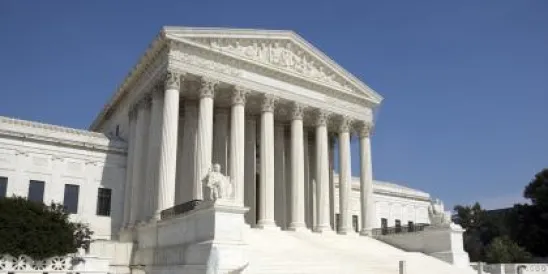On May 26th, in Commil USA, LLC v. Cisco Systems, Inc., the U.S. Supreme Court held that an accused infringer cannot hide behind a reasonable belief that a patent is invalid in order to avoid being found as an infringer by inducement. The Court reversed the U.S. Court of Appeals for the Federal Circuit which had previously held that a good faith belief that a patent was invalid was a defense to an allegation of induced patent infringement. The significance of this holding will be widespread, as accused infringers trying to defend against a charge of infringement by inducement are now limited to either arguing that they were not aware of the patent or that they had a good faith belief that the patent was not infringed. Their belief that the patent is invalid is no longer relevant to the question of induced infringement.
Induced infringement is a form of indirect patent infringement. Patent infringement can take place directly, such as when an accused infringer directly performs all of the steps of a patented method or directly sells an infringing product. Indirect patent infringement occurs when a party contributes to another directly infringing by selling a material part of the invention to the other, or when a party induces another to directly infringe. This latter induced infringement is the subject of this Supreme Court ruling, which also confirmed that induced infringement can only exist if the defendant “knew of the patent and knew as well that the induced acts constitute patent infringement.” In other words, the defendant must know that the acts by others are infringing for induced infringement to exist.
The question before the Court was whether a defendant’s good faith belief regarding patent validity is a defense to a claim of induced infringement. The Court held it is not a defense, reasoning that patent infringement and invalidity are separate issues under the Patent Act. As such, belief regarding invalidity cannot negate the scienter required under the induced infringement part of the statute. The Court also reasoned that allowing such a defense would undermine and lessen the presumption of validity that all patents carry, and would also circumvent the high bar that Congress imposed to invalidate patents: the clear and convincing burden of proof.
This decision will have the effect of preventing manufacturers and product developers from relying on good faith patentinvalidity positions and opinions of counsel in an attempt to avoid induced infringement claims at a later time. Effective opinions of counsel on the issue of inducement should now include reasonable non-infringement positions, without reference to invalidity positions, in order to truly remove the scienter required to prove induced infringement. While opinions of counsel should still include invalidity positions in order to reduce the potential for a willful infringement determination, such invalidity positions are no longer relevant to the issue of induced infringement.




 />i
/>i
